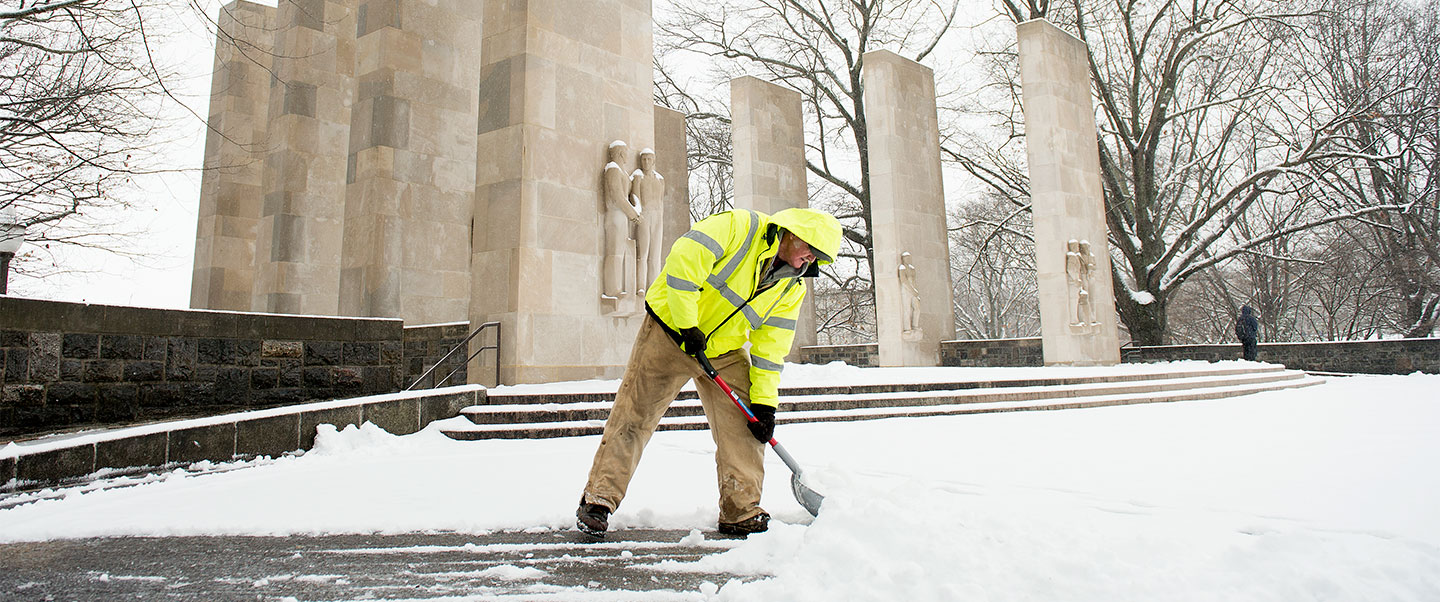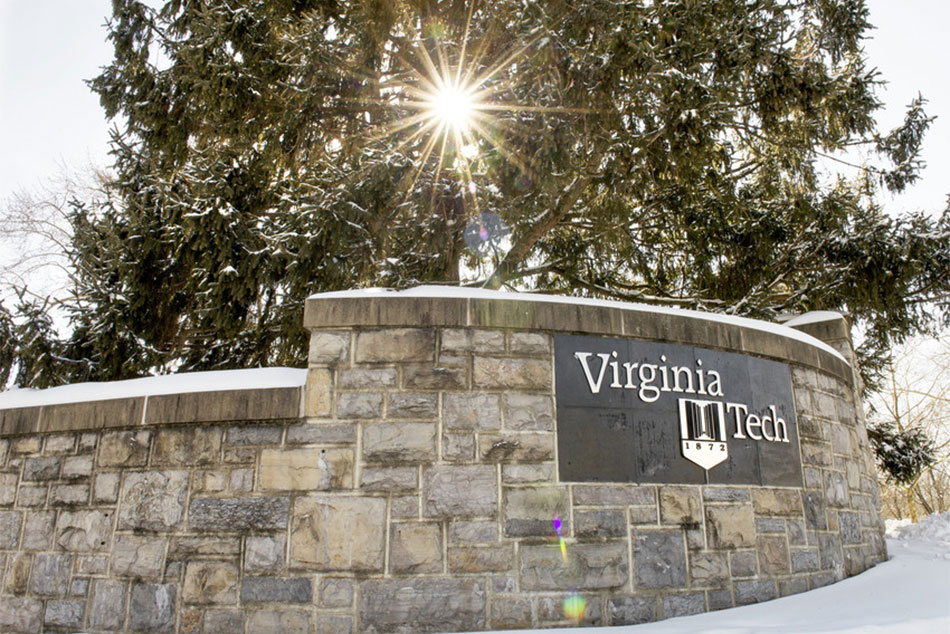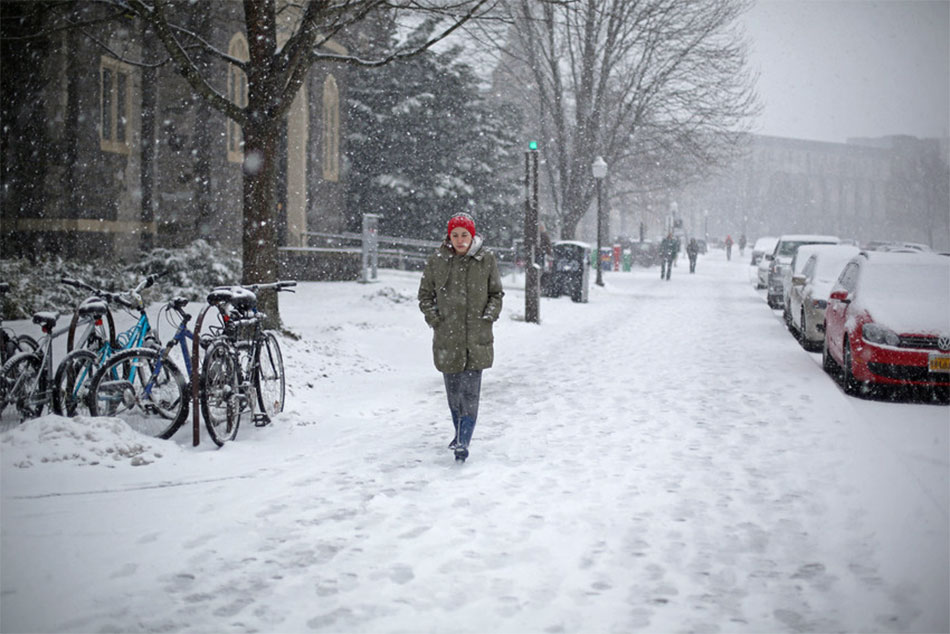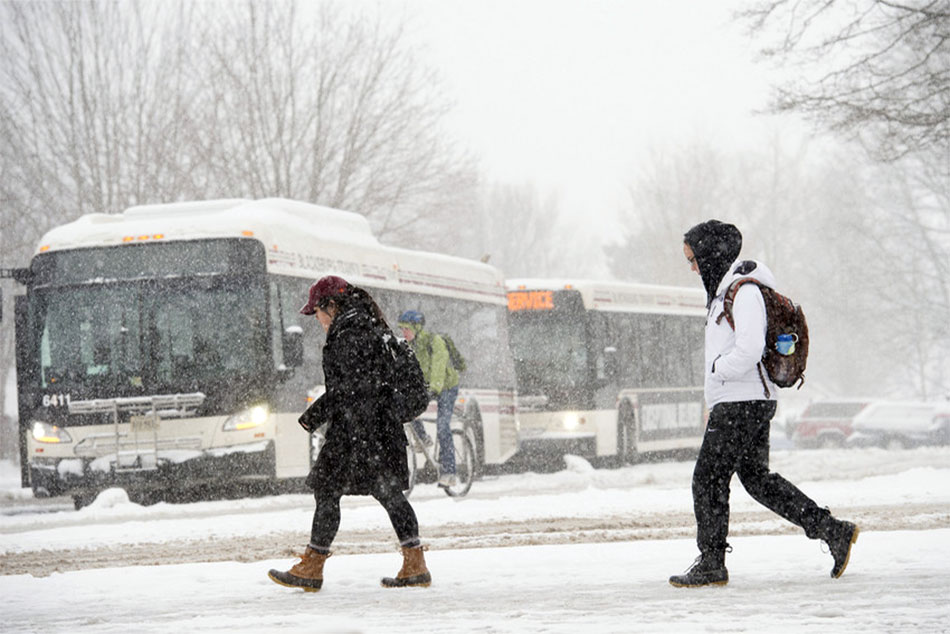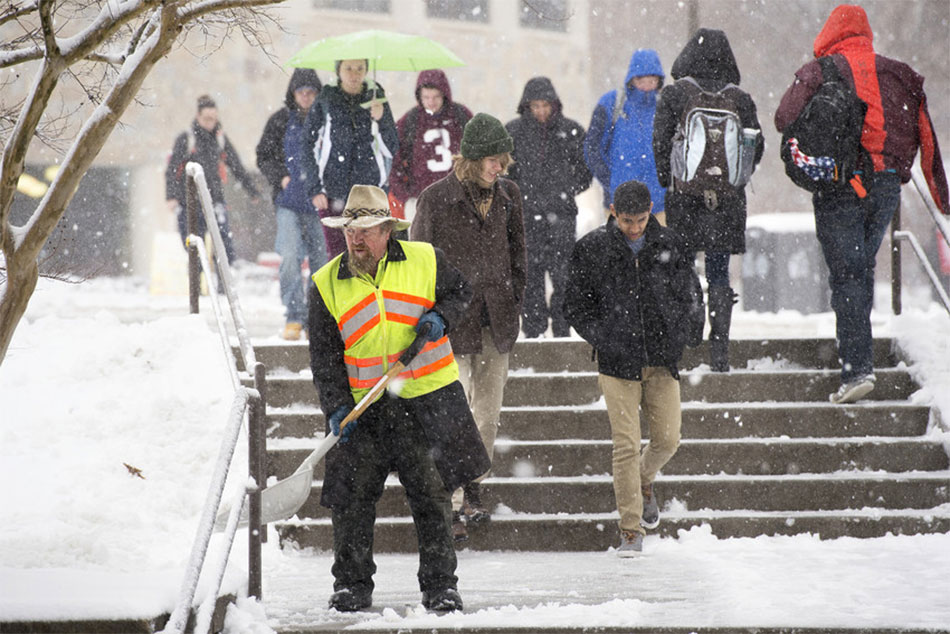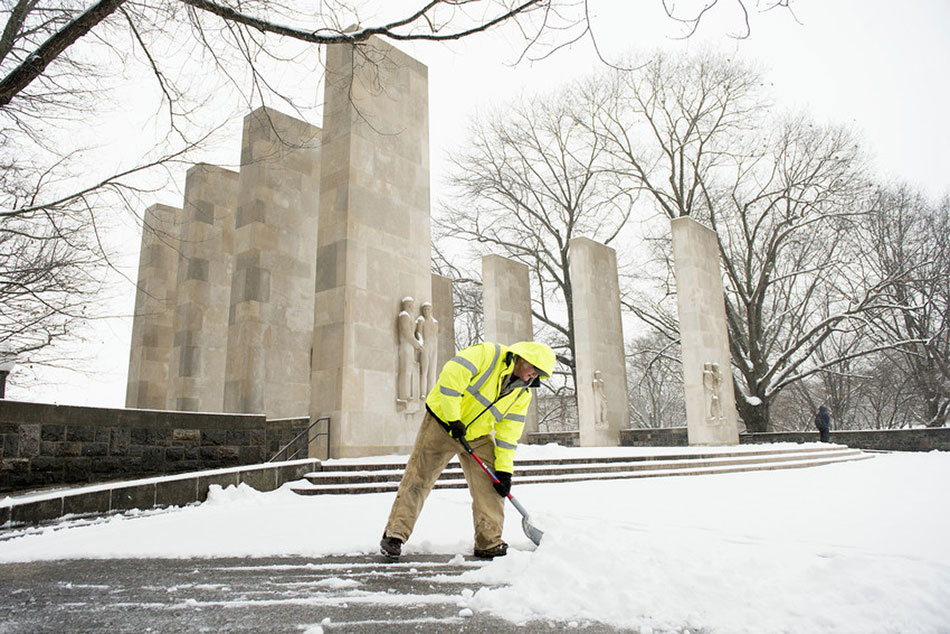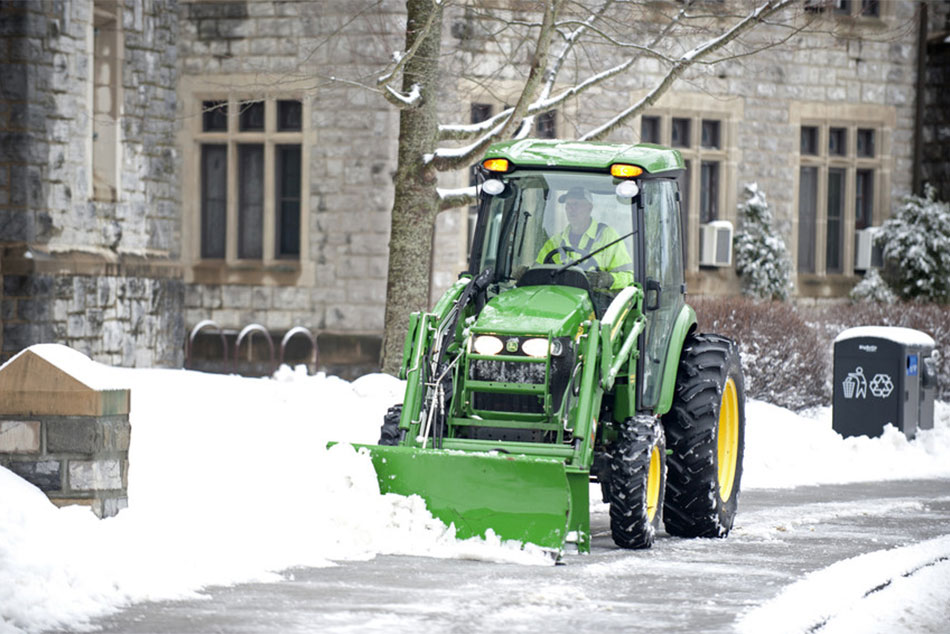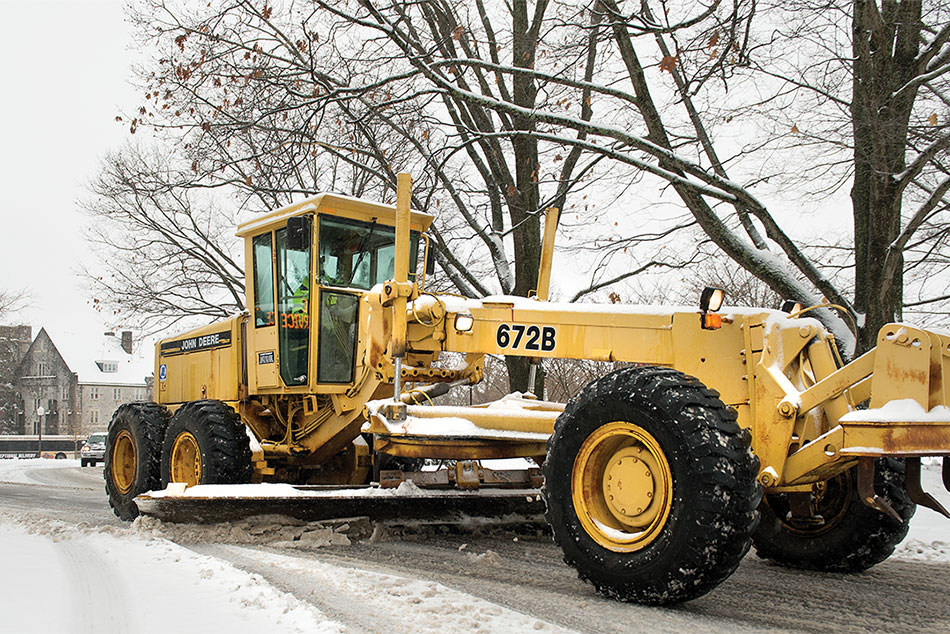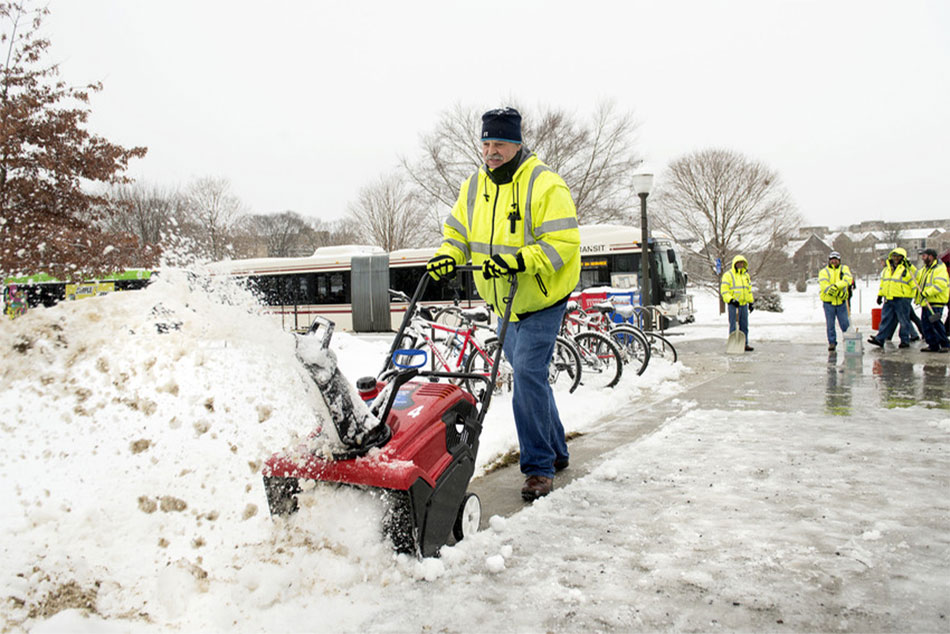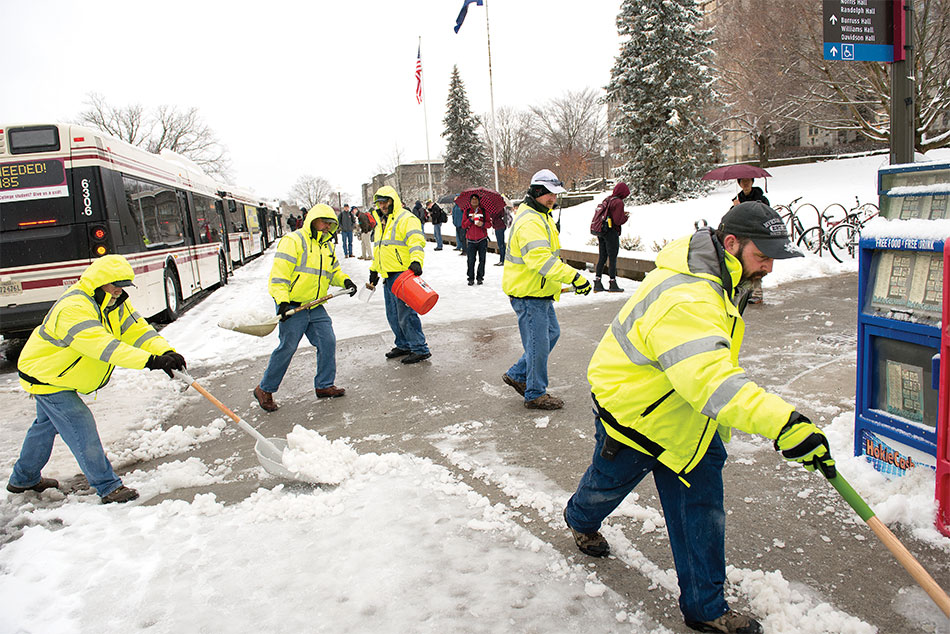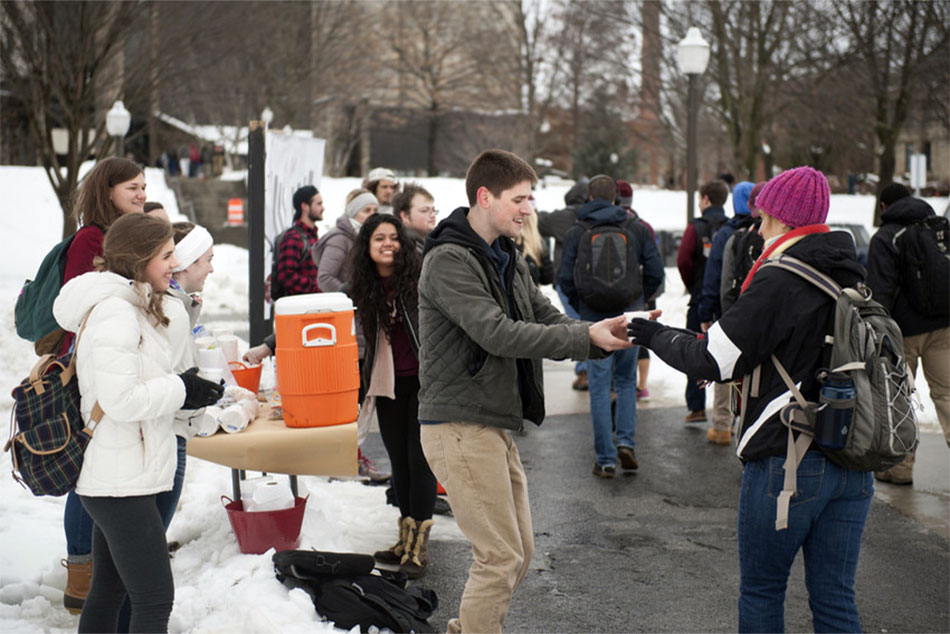snow Problem
How Tech Ticks
snow Problem
Photos by Logan Wallace
The warmth of springtime may be upon us, but in the winter we can't wait on temperatures to melt ice and snow on Virginia Tech's 22 miles of sidewalks and 34 lane miles of roads and service drives. When frigid weather whips into Blacksburg, more than 300 people—from tractor drivers to shovel wielders—fight to keep dining centers open and classes in session.
Here's how it happens, according to Anthony Watson, associate director of facilities, buildings, and grounds.
1. As the potential for a storm increases, John Beach, chief of staff for facilities operations, starts watching forecast models and talking to the National Weather Service.
2. When snow or a freezing mix is coming, crews pretreat the streets and parking lots (as well as sidewalks and stairs, if there's time) with 23 percent salt brine taken straight from the tanks at the Power Plant. The process is a vast improvement over the past when the brine was mixed by hand.
Deepest 24-hour snowfalls in Blacksburg
- 20.0" — Jan. 10, 1921
- 15.4" — Feb. 13, 1960
- 14.1" — Mar. 13, 1993
- 14.0" — Jan. 7, 1996
- 14.0" — Dec. 26, 1969
- 14.0" — Dec. 17, 1930
- 13.6" — Jan. 22, 1966
- 12.4" — Mar. 2, 1960
- 12.0" — Dec. 18, 2009
- 12.0" — Jan. 29, 1966
3. If more than 4 inches is forecast, administrators post a notice for owners to remove their vehicles from emergency snow routes, which allows plowers to push snow over the curb and into the grass.
4. By 5 a.m. the morning of a storm, Sherwood Wilson, vice president for administration, is collecting road-condition and readiness reports to decide along with other administrators whether the university opens, starts late, or stays closed. These days, the decision depends heavily on whether Blacksburg Transit can operate. "If BT can't run, we don't open," said Watson.
5. Once the snow (or ice) starts, eight grounds workers plow roads, loading docks, and service drives in 12-hour shifts. Operators of more than a dozen tractors, utility task vehicles, and skid steers help clear main sidewalks. More than 200 trade shop workers and housekeepers break out the shovels, and student resident advisors even pitch in. "We can touch just about everything on campus in two hours," Watson said. "It's really a group effort."
6. Once the storm is over, workers "hit everything hard," Watson said, widening paths through the snow on sidewalks and roads. Contract crews clear parking lots (Tech workers try to keep parking lot drive lanes plowed during the storm). Assigned people report early, sometimes for days after a storm, to treat any melt that has refrozen.
Around the Drillfield
- Athletics
- Corps of Cadets
- How Tech Ticks
- Moment
- News
- Ology
- Philanthropy
- Question
- What's In It?
